Speculation about the possibility of China and Russia creating an official strategic alliance in response to American unipolar dominance is not new and can be traced back to the early 1990s. Recently, however, the American “pivot to Asia,” China’s new assertiveness in territorial disputes, Russia’s high-profile “turn to the East,” and the deterioration of Russia-America and, more broadly, Russia-West relations as a consequence of the Ukraine crisis have generated a complex geopolitical milieu that reignited discussion among both policy advocates and scholars about the prospects of a China-Russia strategic alliance.
Alexei Pushkov, the head of the Foreign Affairs Committee in Russia’s State Duma, stated “the United States runs the risk of making a huge foreign policy blunder by simultaneously antagonizing two major world powers…. For the United States, Russia is an enemy and China is a potential enemy. But the confrontation course with both major powers is a strategic mistake.”1 Some Russian analysts also argued, “America cannot stop containing China. America cannot stop containing Russia. American cannot stop pushing China and Russia to a new political and military alignment.”2 In China, where until recently the official line was “non-alignment” (bu jiemeng zhengce), some prominent scholars have started to make unambiguous calls for a comprehensive strategic alliance with Russia by arguing on the pages of the CCP Central Party School’s internal publications that “China-Russia strategic relations are the most substantive ones” 3and elsewhere that “China will be unable to shift the world from unipolarity to bipolarity unless it forms a formal alliance with Russia.”4 Recently, John Mearsheimer castigated US policy towards Russia, calling it “strategic foolishness of the first order” because it drives Russia and China together, which is against US interests.5 Accompanying the reinvigorated discussion of the prospects of a China-Russia alliance is the reemergence of age-old myths about China-Russia relations, drawing on clichés about Russia, China, and the relations between them, which have become the default rhetorical background of many evaluations of the chances for an alliance to materialize. Below, I use evidence to debunk four popular myths cited as reflecting the obstacles against a potential alliance.
The first myth runs as follows: because post-Soviet Russia is much weaker than China, any alliance between the two will be disproportional and will look like a “union of unequals.” This is not in Russia’s interest, and therefore, Russia is reluctant to enter such an alliance. The second myth addresses demography and revives the “yellow peril” bogeyman, mostly forgotten in Russia. According to this story, if Russia and China become too close to each other, Russia’s underpopulated regions in the Far East and Siberia are going to be quietly occupied by the Chinese, whose country is already overpopulated. Russia obviously does not want this and, therefore, will not form an alliance. The third myth is about Russia’s excessive economic dependence on China at the expense of its relations with other Asian countries. Excessive closeness to China will turn Russia into an energy appendage of China and, in a worst-case scenario, can generate strong centrifugal pressures within Russia and even result in the loss of control by Russia over its underdeveloped eastern territories. Therefore, Russia is highly unlikely to form an alliance with China. The fourth myth is that there is no trust between China and Russia. Because they do not trust each other, alliance is unlikely.
All four myths emerge in different forms and shades in analysis of the obstacles to a future alliance. Some seem convincing because they are premised on geographic, economic, social, and demographic circumstances of the region including the China-Russia common border. Upon closer examination, however, one can see that all four myths lack solid empirical grounding.
Myth One: Russia’s Declining Power and Non-alignment with China
Russia is consistently pictured as a weak or weakening power. Joseph Nye, for example, wrote in his recent commentary on the possibilities of a China-Russia alliance that Russia may not be able to manage a real alliance with China and that one of the reasons for this is that “Russia’s economic and military power has been in decline, whereas China’s has exploded.”6 He further argues that Russia is anxious “over China’s conventional military superiority” and that the power imbalance between China and Russia suggests that Russia would resist a tight military alliance with China.7 These statements can be rejected upfront because relative weakness/strength is not a decisive factor in alliance formation. Most military alliances are asymmetrical in terms of the relative power of their members. All US allies are disproportionally weaker than the United States, but, nevertheless, are very useful for its global supremacy, and, moreover, the allies are unwilling to withdraw from their alliance. However, how has Russia’s power vis-à-vis China been changing over the last decade or so? Is Russia, indeed, in a state of hopeless decline?
A cursory glance at the data demonstrates that the statement that Russia’s economic and military power “has been in decline” is wrong. Post-Soviet Russia has been making significant progress both economically and militarily, even if many are failing to credit it as a rising power. Figure 1 displays changes in its GDP and military expenditures. Aside from the eight years of decline following the collapse of the Soviet Union, Russia has been growing remarkably and consistently over the last fourteen years. In 1999, Russia’s GDP fell to a meager $196 billion; by 2013 its GDP reached $2.1 trillion, an 11-fold increase. Russia’s military spending in 2013 was $88 billion, 14 times the $6.47 billion figure for 1999.
Figure 1: Economic and Military Growth in Post-Soviet Russia
Source: World Bank ;
SIPRI Military Expenditure Database
Russia is also not a declining power in comparative terms. Figure 2 shows military spending of BRIC member states since 1991. Russia was below both India and Brazil in the late 1990s but leaped forward after the turn of the century. According to a SIPRI report, in 2014 its military budget was approximately 2.5 trillion rubles, which ranks Russia third in the world after the United States and China. Since 2008, Russia’s military budget has grown by 31%, and Russia has surpassed the UK and Saudi Arabia. Over the last 16 years, Russia’s military budget has increased almost 14-fold. In relative terms, in 1999, China’s military budget was 3.2 times larger than Russia’s ($20.56 billion and $6.47 billion), but by 2013, this fell to 2.2, ($188.46 and $86.84 billion), Therefore, it cannot be argued, either in absolute or relative terms, that Russia’s power has been in decline. If relative power matters at all for alliance formation, a China-Russia alliance now is more feasible than 10-15 years ago because, contrary to claims of Russia’s continuous weakening, it has been accumulating power rapidly.
Figure 2: Military Spending of BRIC Members ($US billions)
Source: SIPRI Military Expenditure Database
Another crucial aspect of China-Russia relations is the fact that Russia is a major exporter of high-tech weaponry. The importance of this must not be underestimated, given that the lack of advanced military technology is the Achilles Heel of China’s superpower standing and a source of frustration for its government. Although China’s arms exports are growing, it still lacks state-of-the-art military technologies, and Russian weapons remain a “holy grail” for China. Russia’s qualitative comparative advantage in military technology vis-à-vis China substantially elevates Russia’s position in bilateral relations and reduces China’s quantitative advantage, which is not necessarily directly convertible into power capabilities.
The final point that should be kept in mind is the quantity and quality of Russia’s nuclear weapons, which are on par and in some aspects even better than those of the United States. The story of global-range nuclear capabilities is still the story of two countries. Moreover, Russia is still the only power that has guaranteed second-strike capability against the United States. It would be wrong to argue that in the post-Cold War world America is powerful to the extent that there is no existential threat to it. The Soviet nuclear capacity effectively contained the United States during the Cold War. Russia’s considerably modernized nuclear weapons continue to contain it. Russian and American nuclear stockpiles are still the guarantor of the rule according to which US soldiers never shoot Russian soldiers, and vice versa, in a direct military conflict. Having a nuclear capability sufficient for containing the United States, Russia will not feel uncomfortable in the arms of the Chinese, whose nuclear capabilities lag far behind those of both the United States and Russia.
Myth Two: The Demographic Factor as a Barrier for a China-Russia Alliance
Another alleged concern about China-Russia relations that may undermine the potential for an alliance lies in demographic conditions. The issue of China being overpopulated and Russia, especially its Far Eastern territories, being underpopulated frequently appears in publications. Some talk about a “vast population of potential migrants” that may come from China.8 Others draw scary pictures of the disappearance of Russia’s ethnic identity, threats to Russia’s territorial integrity, and “creeping sinicization” that may happen because there are too many Chinese and too few Russians along the China-Russia border.9 According to Nye, one of the deep problems hindering the formation of a China-Russia alliance is that in Eastern Siberia, six million Russians live across the border from up to 120 million Chinese.10 Others write that Russia is reluctant to form an alliance with China because it is “demographically in decline,” and there are concerns about the uncontrolled migration of Chinese citizens into the sparsely populated areas of Russia’s Far East and Siberia, which may eventually be taken over by China.11
Under closer examination, the statement that demography is what Russia should worry about when forming an alliance with China crumbles. First, Russia’s demographic decline is not the case any longer; the depopulation trend had been reversed by the end of the 2000s. In 2009, Russia recorded population growth, adding 23,300 people.12 In 2012, its population increased by 292,400 people.13 In 2013, Russia’s total fertility rate reached 1.707 children per woman and became the highest in Eastern, Southern and Central Europe;14 the trend of depopulation had been reversed, and natural population growth has started.15 Figure 1 reflects Russia’s long-term demographic trend, which refutes the statement that it is in decline demographically.
Figure 1: Population Dynamics in Russia
Source: Calculated based on data from ROSSTAT http://www.gks.ru/
Regarding the demographic gap between the border regions of Russia and China, the situation is not as troubling as it is pictured, and there are no reasons to expect mass Chinese influx to the Russian Far East. Table 3 compares population density in border provinces of China (first column) with that in corresponding border provinces/regions of Russia and Mongolia (second column). Column three divides the population density of a Chinese province by that of a corresponding Russian and Mongolian border province. The average density of Russia’s krai and oblast bordering China is 17.83 times lower than that of Chinese provinces bordering Russia. In the case of Mongolia, which also shares a long border with China, this figure is 32.9. The population gap between bordering Mongolian and Chinese provinces is much larger. China so far has not displayed the slightest desire to occupy the provinces of Mongolia (a state barely able to defend itself), which are much more underpopulated than Russian ones. If China does not occupy the bordering territories of Mongolia what would make China start occupying territories of a nuclear superpower? Moreover, as Table 3 demonstrates, China has its own Siberia—Tibet and Qinghai—with population densities 60 and 20 times lower than in Jilin and Heilongjiang provinces, which border Russia. The natural population imbalance is neither a necessary nor sufficient condition for migration.
Table 3: Comparative Population Density of Border Regions (people/km2)
Source: World Bank Provincial level data are from various sources, including provincial statistical reports.
Contrary to the assumption that China will be demographically expansionist, the demographic trends within China has entered a phase of extremely low birth rates for some time. In the early 1990s, the total fertility rate crossed the 2.14 mark, the natural replacement rate.16 By the late 1990s, the TFR had reached 1.8, and by 2011 it was 1.5, significantly below that in the United States, the UK, and France.17 According to China’s sixth population census, in large cities, the TFR had dropped to 0.88, which is one of the lowest in the world. The record low of 0.14 for the entire TFR history was registered in 2000 in the urban district of Jiamusi in Heilongjiang province, which borders on Russia.18 These dynamics caused a rapid aging population. China will need its working population at home in the years to come.
Most importantly, recent research on the patterns of migration reveals that the Chinese do not come to Russia and its Far East in large numbers. Most who do visit return home once their visas or work permits expire. This was the case during the early 2000s, when the population of Russia was in decline and China was poorer, and it is even more so now, when the trend of depopulation in Russia has been reversed and living standards in China have further improved. The problem of the migration dimension was successfully dismissed by V.Ya. Portyakov in a series of articles on Chinese migration to Russia.19 The issue of Chinese emigration to Russia has been overblown by irresponsible media and Russian local politicians, who have tried to build political capital by creating an image that they are fending off the Chinese threat. The essence of the phenomenon was expressed by a Russian journalist who wrote, “Russia is not a lusted-after land for the Chinese eager to settle there, while trips to Russia are simply a compulsory economic necessity.”20 Portyakov demonstrates that Russia is not a priority destination for the Chinese emigrants. Responsible voices of the representatives within the Russian academic community, who do not make “threats” out of nothing, are now gaining increasing force. It has become a consensus that Chinese immigration has no significant impact on the demographic situation in the Russian Far East and, when properly managed, can be in Russia’s geopolitical interest. The myths and imposed stereotypes about Chinese migration to Russia are dissipating, and an adequate understanding of its nature as temporary migration is emerging.21
Myth Three: Russia’s Excessive Dependence on China
The third myth is a continuation of an old story about Russia, particularly its Far Eastern regions, becoming excessively dependent on China and, even worse, turning into an energy appendage of China. Mankoff wrote, “Russia’s ambitions to become a significant player are at odds with its growing dependence on China.”22 Rozman believes that “The door is closing on a strategy to maximize Russia’s leverage in the Asia-Pacific region and to develop the Russian Far East as anything but a resource appendage for China.”23 Russia’s Asian pivot, therefore, amounts to Russia’s pivot to China, not to a broader Asia. This may be a problem for a China-Russia alliance because “there is the worry that in exporting little more than raw materials to China, Russia is increasingly tying itself into a semi-colonial relationship.”24 This myth emerges every time China-Russia relations develop and the two countries enter a new stage of cooperation.
The reality is that the largest stable trade partner of Russia is still the EU. Almost 50% of Russia’s external trade is with the EU, whereas China occupies slightly more than 10%. It is also not a secret that natural resources so far remain the lion’s share of Russia’s exports to the EU. Thus, if Russia is an “energy appendage” of anyone, it is of Europe, not China. If Russia has been able to manage such asymmetrical trade relations with Europe for decades (even through troubled Ukraine), why is it assumed that a similar pattern of relations with China is going to be a problem? The most revealing evidence is the comparison of the relative weight of China, Japan, and South Korea in the external trade of Russia’s Far Eastern Federal District (RFEFD)—the one that, as some predict, is particularly vulnerable to becoming a resource colony of China. As Table 4 clearly demonstrates, the external trade of RFEFD is actually more dependent on South Korea than China, a prevailing pattern. As to exports from RFEFD to China, they are much smaller than exports to either Japan or Korea, and the share has not grown over the last 8 years. This completely debunks the myth that the region is turning into an energy appendage of China. If it is an energy appendage at all, it is that of South Korea and Japan, but not China.
Table 4: Share of China, Japan and South Korea in the External Trade of RFEFD (%)
Source: Far Eastern Branch of Federal Custom Service of Russia
As to the recent $400 billion gas mega-deal, its impact on China-Russia relations, especially in terms of who becomes dependent on whom, is not clear-cut because it ties China to Russia the same way that it ties Russia to China. It is a strategic shift for China as well–an indication not only of how seriously Russia is taking steps towards China but also of how seriously China is taking steps towards Russia. To realize gas delivery from Russia to China, the two countries have committed themselves to developing a powerful pipeline network also worthy of hundreds of billions of dollars. Once put in place, pipelines are immovable and both sides become committed to using them and fulfilling a range of mutual obligations. Such long-term infrastructure commitments are not taken lightly by the two governments; they demonstrate certainty about the partner and willingness to compromise, which bodes well for future relations.
The arms trade between China and Russia is where China becomes dependent on Russia and not the other way around. China is not the main market for Russian weapons, but for China, Russia is the main source of advanced military hardware. Table 5 shows trends in international arms transfers. Russian weapons account for more than 60 percent of China’s total import of military hardware, whereas the role of the Chinese market for Russian arms exports is only 11%. In case Russia decides to cut its exports to China, it will lose only 11% of sales, whereas China will lose 61% of all of its purchases. If one is to talk about the dependence of Russia on external markets, it seems that the Indian market is more important because it comprises almost 40 percent of Russia’s total exports.
Table 5: Arms Exports from Russia to China and India (%)
Source: SIPRI, Trends in International Arms Transfer
Contrary to many statements, the excessive dependence of Russia, and particularly Russia’s Far Eastern territories, on China is not in accord with reality. Should the two countries decide to form an official alliance, overdependence of the former on the latter should not be an issue.
Myth Four: There is Not Enough Trust between China and Russia
The fourth myth is about the lack of “trust” in China-Russia relations. The role of what is meant by the vague concept of “trust” is being accentuated by many who comment on China-Russia relations in general and the chances of an alliance materializing in particular. Some talk about the “transactional nature of the Sino-Russian relationship” and argue that “Sino-Russian relations lack trust and are characterized by competition, especially in the two countries’ shared region”25 Others argue that “in spite of a series of common interests on the global scene, there is a fundamental lack of strategic trust between the two [China and Russia].”26 Still, others go so far as to argue, “Russia neither trusts anyone, nor is, in turn, trusted by anyone, in Asia.”27
The reality is that states’ policies are shaped, first and foremost, by national interests and not trust. “Trust” between states in international politics is unlikely. At the core of any alliance is a transaction based on common interests; the degree of overlap in these interests predefines whether there is any “trust.” An alliance between two countries is not a marriage between two people, a relationship where trust plays a crucial role. Trust never plays a decisive role in shaping the foreign policies of states. Similarly to Russia, the United States and China also do not trust anyone and are not trusted by others. Alliances emerge and disappear according to international circumstances. China was an ally of the Soviet Union in the 1950s. By the 1970s, however, there was an alignment between China and the United States. In the 1980s, China announced a non-alignment strategy, whereas Russia has always had allies. The United States was the major anti-Communist country during the Cold War. However, as some scholars perspicaciously note, how does one explain the fact that Nixon, who was a major opponent of Communism, courted Mao’s China and snubbed Taiwan, which was America’s loyal, anti-Communist ally? Why did Carter, a human rights crusader, turn a blind eye to China’s human rights violations and elevate US-China relations? Why did Reagan, a militant anti-Communist, restore US-China military cooperation? What made Clinton rush to delink China’s Most Favored Nation status from its human rights performance?28 Were these sudden outbursts of American trust toward China?
When conditions for a balancing coalition are ripe, states do not have the luxury of following their subjective preferences and basing their relations on what is called “trust.” China-Russia relations have had ups and downs during their long history, but there is nothing abnormal in terms of trust and mistrust between the two countries. Like many other states, China and Russia do not have to trust each other to form an alliance that will serve certain purposes and then be dismissed once the international situation changes. Even if we were to accept the assumption that trust matters in alliance formation, there is no reason to see trust as a problem in China-Russia relations. The two started to interact with each other well before the United States emerged on the world map, and there is a certain geopolitical sense of accommodating a big neighbor in both. Recently, as many rightly note, Putin and Xi seem to be friends. and the level of trust between them is higher than is normal between the heads of two countries. According to Alexander Gabuev, “Putin has more trust in Xi than in any Chinese leader before him and any current Western leader,” and the “sincerity Putin feels in Xi has helped the Kremlin to adjust many policies towards China that had been in place for over a decade.”29 In centralized political systems like China and Russia, personal trust between top decision makers may have a greater impact on foreign policy than in decentralized systems.
At the same time, as recent public opinion surveys in Russia demonstrate, the way the Russians view the Chinese has improved dramatically. More than 60% of ordinary Russians consider Russia-China relations to be friendly.30 Moreover, a positive turn in Russians’ views of China occurred long before the Ukraine crisis and the subsequent deterioration of Russia’s relations with the West. Public opinion research centers register positive perceptional dynamics in Russia-China relations at least since 2006.31 This confirms the disappearance of the “China threat” complex in Russian society. Today, the majority of the public considers China a friendly state and believes that a stronger China is not a threat to Russia. It is reasonable to expect that these trends will facilitate comprehensive Russia-China cooperation.
Conclusion
The main goal of the analysis presented here is not to prove that China and Russia will soon enter and inevitably develop alliance relations. This will depend on many factors, one of which is American policies towards both. As US policymakers’ recognition of the ongoing China-Russia rapprochement grows, the United States may start trying hard to drive a wedge between China and Russia, and it is hard to predict the results of such policies. Instead, the goal of the analysis was to dissipate preset views and biases regarding China-Russia relations that, according to many observers, may become a barrier for an alliance to emerge. As demonstrated, none of the four myths fully conform to reality. They are elements of a constructed counter-productive “matrix” prevailing in thinking about China-Russia relations.
1. “Confronting Both Russia and China ‘Strategic Mistake’ for US – Russian,” Lawmaker http://en.ria.ru/world/20140421/189291820/Confronting-Both-Russia-and-China-Strategic-Mistake-for-US-.html
2. ANALYSIS: US Containment Policy Pushes Russia, China Together http://en.ria.ru/world/20140421/189366921/ANALYSIS-US-Containment-Policy-Pushes-Russia-China-Together.html
3. Yan Xuetong, “Zhonge zhanlue guanxi zui youshi zhi yiyi,” Zhengdang ganbu cankao, No. 4, 2013, 31-32.
4. Xuetong Yan, “The Weakening of the Unipolar Configuration,” in Mark Leonard, ed., China 3.0 (European Council on Foreign Relations, 2012), 112-118.
5. See the interview with John Mearsheimer by Nikkei Asian Review “US, China heading toward face-off,” http://asia.nikkei.com/magazine/20150326-Singapore-after-Lee/Viewpoints/US-China-heading-toward-face-off-says-Mearsheimer
6. Joseph Nye, “A New Sino-Russian Alliance?” Project Syndicate, January12, 2015 http://www.project-syndicate.org/commentary/russia-china-alliance-by-joseph-s–nye-2015-01, accessed 2 April 2015.
7. Ibid.
8. Gilbert Rozman, “The Russian Pivot to Asia,” The Asan Forum, Vol. 2, No. 6 (November-December 2014) https://asanforum.shoplic.site/the-russian-pivot-to-asia/ accessed 4 April 2015.
9. Marlene Laruelle, “Russia’s National Identity and Foreign Policy toward the Asia-Pacific,” The Asan Forum, January 24, 2014, 10. Joseph Nye, “A New Sino-Russian Alliance?”
11. James D.J. Brown “Ukraine and the Russia-China Axis,” The Diplomat, April 2, 2015, http://thediplomat.com/2015/04/ukraine-and-the-russia-china-axis/ accessed April 3, 2015.
12. Rosstat 2009, http://www.gks.ru/bgd/free/b10_00/IssWWW.exe/Stg/d01/7-0.htm accessed April 4, 2015.
13. Rosstat http://connection.ebscohost.com/c/articles/85653155/russian-population-rises-by-292-400-2012-rosstat, accessed April 5, 2015.
14. “Russian Birth Rate above Regional Average,” Euromonitor International http://blog.euromonitor.com/2013/02/russian-birth-rate-above-regional-average.html, accessed April 8, 2014.
15. Rosstat http://www.gks.ru/bgd/free/B13_00/IssWWW.exe/Stg/dk12/8-0.htm
16. Alexander Korolev “The Demographically Uncertain Foreign Policy of Today’s China,” Russian International Affairs Council, March 7, 2013. http://russiancouncil.ru/en/inner/?id_4=1505#4, accessed April 5, 2015.
17. World Bank 18. H.K.M, Terrell, Fertility in China in 2000: A County Level Analysis. (Unpublished Master of Science dissertation, Texas A&M University, 2005). p. 52.
19. Vladimir Portyakov, “The Russian vector in global Chinese migration,” Far Eastern Affairs, 2006. No 1, 47-64.
20. Vitali Kurennoi, “Threat from the East or Mechanism for Delivering Goods?” Politicheskii zhurnal,No. 27 (August 15, 2004), pp. 70-73.
21. Russia’s current immigration laws and their enforcement are very strict, and there are simply no channels through which the Chinese could sneak into Russia in large numbers and “quietly occupy” Russian territories.
22. Jeffrey Mankoff, “US Perspective,” The Asan Forum, July 25, 2014, https://asanforum.shoplic.site/us-perspective-3/ accessed April 5, 2015.
23. Gilbert Rozman, “The Russian Pivot to Asia.”
24. James D.J. Brown, “Ukraine and the Russia-China Axis.”
25. Jeffrey Mankoff, “US Perspective.”
26. Valerie Niquet, “French Perspective,” The Asan Forum,July 25, 2014, https://asanforum.shoplic.site/french-perspective/ accessed April 6, 2015.
27. Sergey Radchenko, “Multilateralism in Northeast Asia – 3,” The Asan Forum, https://asanforum.shoplic.site/multilateralism-in-northeast-asia-3/ accessed April 6, 2014
28. Zhang Ruizhuang, American Foreign Policy Motives: National Interest vs. Ideology, Unpublished PhD dissertation, University of California, Berkeley, 1997.
29. Alexander Gabuev, “Russia’s Policy towards China: Key Players and the Decision-making Process,” The Asan Forum, March 5, 2015, https://asanforum.shoplic.site/russias-policy-towards-china-key-players-and-the-decision-making-process/, accessed April 6, 2015.
30. Levada-Center, population survey “Vneshnepoliticheskie vragi i dryz’ia Rossii,” September 26-29, 2014, http://www.levada.ru/21-10-2014/vneshnepoliticheskie-vragi-i-partnery-rossii, accessed December 12, 2014.
31. FOM survey “Otnosheniia mezhdu Rossiei i Kitaem,” April 5-6, 2014, http://fom.ru/Mir/11460#, accessed December 14, 2014.
 EMAIL
EMAIL  LIST
LIST 
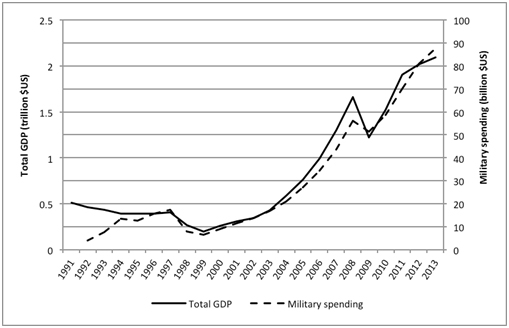
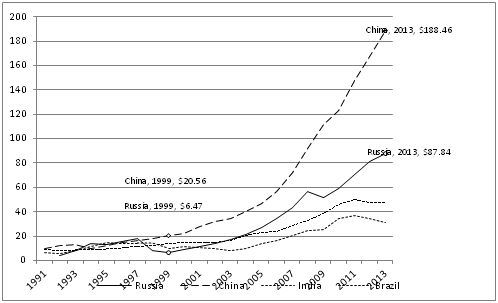
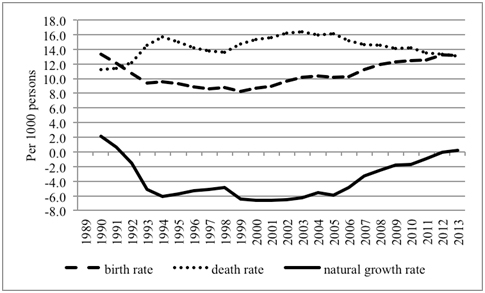

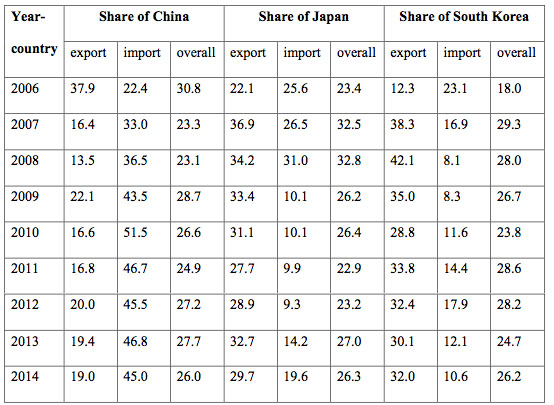
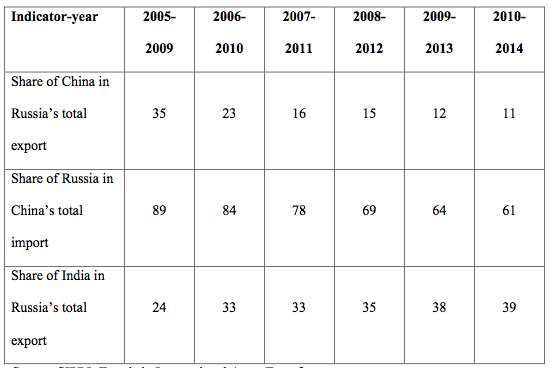
SHARE